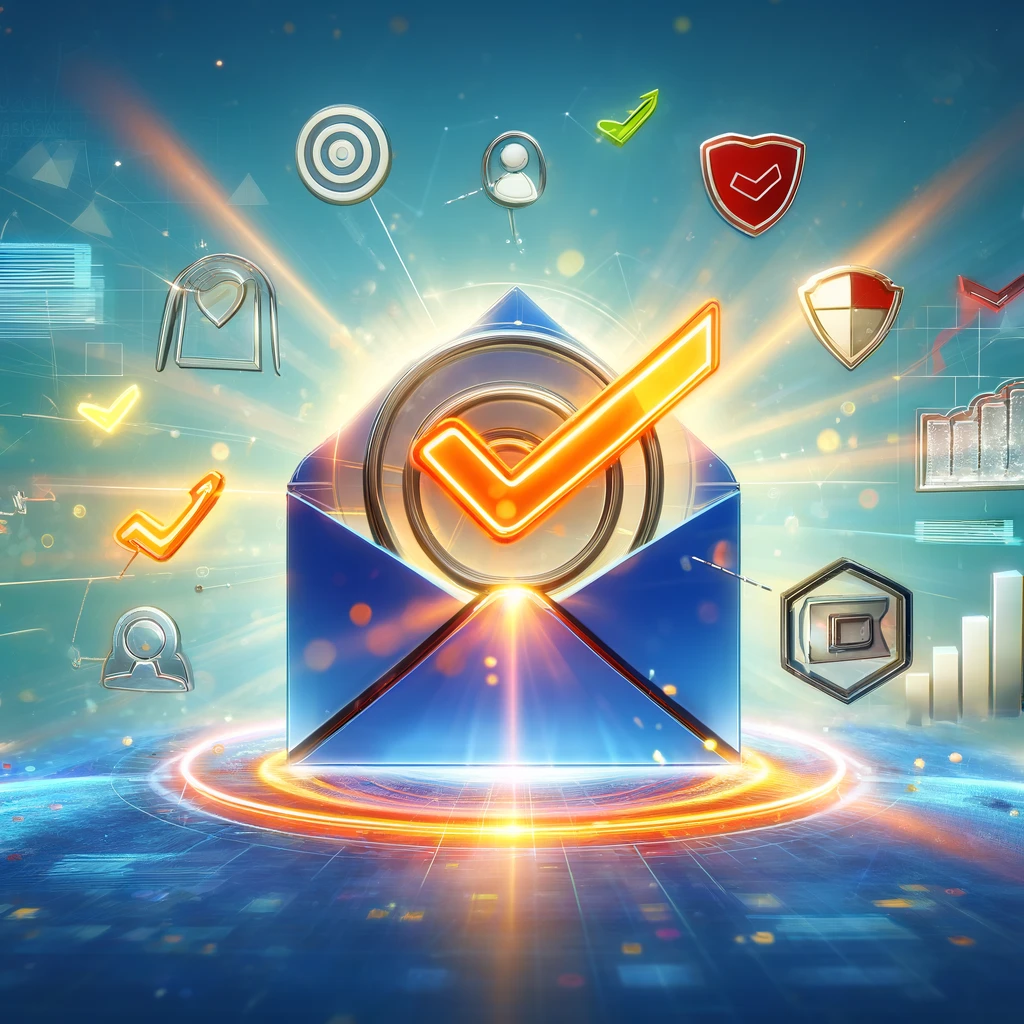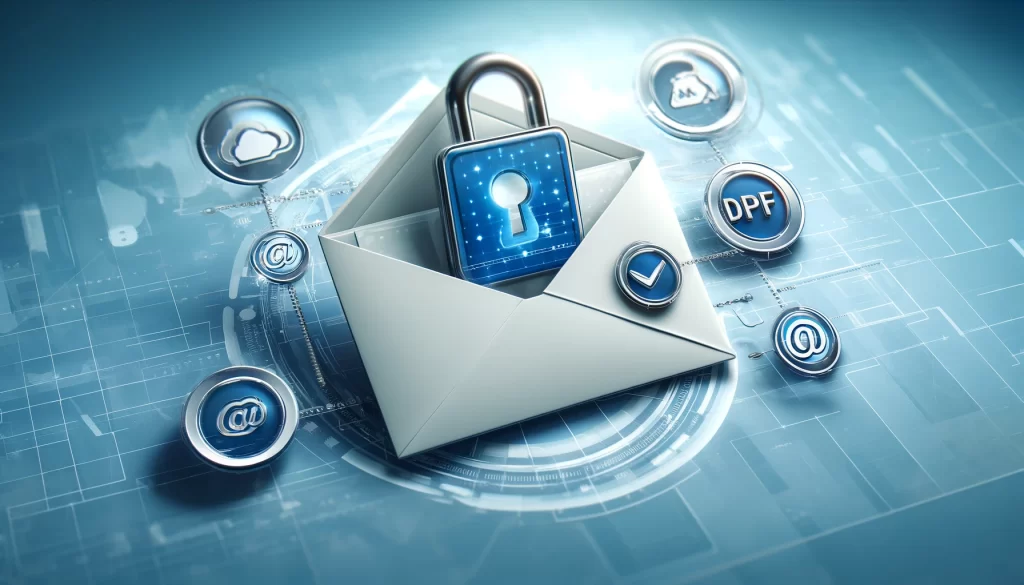
In today’s digital age, email marketing remains a crucial tool for businesses of all sizes. However, ensuring that your emails reach subscribers’ inboxes can be challenging. Email deliverability, the ability to successfully deliver emails to recipients’ inboxes, is a critical factor that can make or break your email marketing efforts. Poor email deliverability can lead to wasted resources and missed opportunities, ultimately affecting your bottom line. This blog post will guide you through 10 proven strategies to improve email deliverability and maximise marketing ROI.
Email deliverability isn’t just about hitting the send button and hoping for the best. It involves a series of best practices and strategies to ensure your emails reach your audience’s inbox, not their spam folder. From maintaining a clean email list to complying with email regulations, these strategies are essential for any business looking to enhance its email marketing effectiveness. Read on to discover how to improve email deliverability and keep your messages from being lost in the digital abyss.
Strategy 1: Use a Recognisable Sender Name and Email Address
A recognisable sender name and email address can significantly influence your email deliverability. When recipients see a familiar name in their inbox, they are likelier to open the email. This recognition builds trust and reduces the chances of your email being marked as spam. To achieve this, always use a consistent sender name and email address that aligns with your brand identity.
Choosing a professional and trustworthy email address is equally important. Avoid using free email services like Gmail or Yahoo for your marketing campaigns. Instead, use a domain-specific email address (e.g., [email protected]). This enhances your credibility and improves your email deliverability by reducing the likelihood of being flagged by spam filters.
Importance of a recognisable sender name
A recognisable sender name establishes an immediate connection with your audience. It reassures recipients that the email is from a legitimate source, increasing the chances of engagement. For instance, using your brand name or the name of a well-known figure within your company can make a significant difference. Consistency in the sender name across all your emails also helps build brand recognition and trust over time.
Tips for choosing a professional and trustworthy email address
When selecting an email address for your marketing campaigns, it’s crucial to keep professionalism in mind. Avoid using personal email addresses or those that look unprofessional (e.g., [email protected]). Opt for an address that reflects your brand and is easy to recognise. Ensure it is simple, memorable, and associated with your business, such as [email protected]. This improves deliverability and enhances your brand’s credibility and trustworthiness.
Strategy 2: Maintain a Clean Email List
Maintaining a clean email list is fundamental to improving email deliverability. An outdated or unengaged list can harm your sender’s reputation and increase the chances of your emails being marked as spam. Regularly updating your list by removing inactive subscribers and invalid email addresses helps ensure your messages reach engaged and interested recipients.
Double opt-in for new subscribers is another effective way how to improve email deliverability. This process requires new subscribers to confirm their email address by clicking a link sent to their inbox. It verifies the email address and confirms that the subscriber genuinely wants to receive your emails, reducing the chances of spam complaints and improving your overall deliverability.
Regularly removing inactive subscribers.
Inactive subscribers can drag down your engagement rates and harm your sender’s reputation. Regularly review your email list and remove those not engaged with your emails in a specified period, such as six months. This helps maintain a clean list and ensures you only target those genuinely interested in your content. Tools like Mailchimp and Constant Contact offer features to automate this process, making it easier to manage your list effectively.
Using double opt-in for new subscribers
Double opt-in is a powerful method for ensuring your email list consists of engaged and willing recipients. When new subscribers sign up, they receive a confirmation email asking them to verify their subscription. This extra step helps filter out fake or mistyped email addresses and ensures that the people on your list genuinely want to receive your emails. Implementing double opt-in can significantly reduce spam complaints and improve your deliverability rates.

Strategy 3: Segment Your Email List
When you think about how to improve email deliverability, segmentation is a powerful tactic. By dividing your email list into smaller, targeted groups based on specific criteria, you can send more relevant and personalised content to your subscribers. This relevance increases engagement rates and decreases the likelihood of your emails being marked as spam.
Segmentation benefits include higher open and click-through rates, improved customer satisfaction, and enhanced deliverability. When subscribers receive content tailored to their interests and behaviours, they are likelier to engage with it. This positive engagement signals to service providers that your emails are valuable, boosting your sender’s reputation and deliverability.
Segmenting your email list based on user behaviour, demographics, etc.
Segmentation can be based on various factors such as demographics, purchase history, email engagement, and more. For example, you can create segments for new subscribers, frequent buyers, or those interested in specific products. By analysing user behaviour and preferences, you can tailor your email content to meet the unique needs of each segment, resulting in higher engagement and better deliverability.
Examples of segmentation strategies that improve deliverability
Some effective segmentation strategies include dividing your list by geographic location, purchase history, or email engagement levels. For instance, sending location-specific offers to subscribers in different regions can increase relevance and engagement. Similarly, targeting frequent buyers with loyalty rewards or re-engaging inactive subscribers with special offers can improve your email performance and deliverability.
Strategy 4: Craft Engaging Subject Lines
The subject line is the first thing recipients see, and it plays a crucial role in determining whether your email gets opened or ignored. Engaging subject lines that capture attention without triggering spam filters is essential when dealing with how to improve email deliverability. A well-written subject line can entice recipients to open your email, increasing your open rates and overall engagement.
When writing subject lines, avoid using all caps, excessive punctuation, and spammy words like “free” or “urgent.” Instead, focus on creating a sense of curiosity, urgency, or personalisation. A/B testing different subject lines can help you identify what resonates best with your audience and enhances your email deliverability.
Tips for writing compelling and spam-free subject lines
To write compelling subject lines, keep them short and to the point, ideally under 50 characters. Use action-oriented language that encourages recipients to open the email, such as “Discover,” “Learn,” or “Get.” Personalisation, including the recipient’s name or relevant details, can also increase open rates. Ensure your subject lines are clear and appropriate to the email content to avoid misleading recipients and potentially harming your deliverability.
Examples of effective subject lines
Effective subject lines can vary depending on your audience and industry, but some general examples include:
- Unlock Exclusive Discounts Just for You!”
- “How to Improve Email Deliverability with These Simple Tips”
- “Your Guide to Better Email Engagement”
- “Limited-Time Offer: Don’t Miss Out!”
You can find the best formulas that resonate with your audience and enhance your email deliverability by testing and refining your subject lines.
Strategy 5: Optimise Email Content
High-quality, relevant content is vital to keeping your subscribers engaged and how to improve email deliverability. Your emails should provide value, whether through informative articles, special offers, or engaging stories. Ensuring your content aligns with your audience’s interests and needs will keep them open and interacting with your emails.
Best practices for email design and layout also play a significant role. Use a clean, visually appealing design with a clear call-to-action (CTA). Avoid cluttered layouts and make sure your emails are mobile-friendly, as many emails are opened on mobile devices. Proper formatting and a balance of text and images will enhance the readability and effectiveness of your emails.
Avoiding spam trigger words and excessive links
Using spam trigger words like “free,” “earn money,” or “guaranteed” can send your emails straight to the spam folder. Similarly, excessive links and images can trigger spam filters and negatively impact how to improve email deliverability. To avoid this, focus on crafting natural, conversational content that provides value without overloading on salty language or multiple links. Testing your emails with spam-check tools before sending can help identify and rectify potential issues.
Best practices for email design and layout
Effective email design involves balancing visual appeal and functionality. Use a single-column layout for better readability, and make sure your emails are responsive across all devices. Include a clear and compelling CTA strategically placed to guide recipients towards the desired action. Consistent branding, including your logo and brand colours, helps reinforce your identity and fosters trust with your audience.

Strategy 6: Authenticate Your Email Domain
Email authentication is critical to improving email deliverability. Verifying that your emails are from a legitimate source helps prevent spoofing and phishing attacks. Implementing authentication protocols such as DKIM (DomainKeys Identified Mail), SPF (Sender Policy Framework), and DMARC (Domain-based Message Authentication, Reporting & Conformance) can significantly enhance your email deliverability.
Email authentication requires technical know-how, but the benefits far outweigh the effort. Authenticated emails are likelier to pass through spam filters and reach recipients’ inboxes. It also helps build a positive sender reputation, crucial for maintaining high deliverability rates over time.
Step-by-step guide to setting up email authentication
To set up DKIM, you must add a digital signature to your email headers that verifies the email’s authenticity. This involves generating a public/private key pair and adding the public key to your DNS records.
For SPF, you’ll need to create a list of authorised IP addresses that can send emails on behalf of your domain and add this list to your DNS records. DMARC combines DKIM and SPF to provide a comprehensive authentication framework. You’ll need to publish a DMARC policy in your DNS records specifying how to handle emails that fail authentication.
Benefits of email authentication for deliverability
Email authentication improves your deliverability and protects your brand from being used in phishing attacks. Authenticated emails are less likely to be flagged as spam, which means higher inbox placement rates and better engagement. Moreover, email service providers (ESPs) favour authenticated domains, improving sender reputation and long-term deliverability success.
Strategy 7: Monitor and Improve Sender Reputation
Your sender’s reputation is a crucial factor in how to improve email deliverability. A good sender reputation means that email service providers trust your emails and are likelier to deliver them to your recipients’ inboxes. Conversely, a poor sender reputation can lead to your emails being blocked or marked as spam.
Monitoring your sender’s reputation involves regularly checking bounce rates, spam complaints, and engagement rates. Tools like Sender Score, Google Postmaster Tools, and Microsoft SNDS can help you track your sender reputation and identify areas for improvement. Taking proactive steps to address any issues can significantly enhance your email deliverability.
Tools for monitoring sender reputation
Several tools are available to help you monitor your sender’s reputation. Sender Score provides a rating between 0 and 100, reflecting your reputation as an email sender. Google Postmaster Tools offer insights into how Gmail users interact with your emails, including spam rates and delivery errors. Microsoft SNDS provides data on how Microsoft views your emails, helping you identify and resolve potential issues. Regularly using these tools can help you maintain a positive sender reputation.
Actions to take if your sender’s reputation is low
If your sender’s reputation is low, taking immediate action is essential. Start by identifying and removing invalid email addresses and inactive subscribers from your list. Improve your email content by focusing on value and relevance, and avoid using spammy language or excessive links. Increasing engagement through segmentation and personalisation can also help improve your reputation. Consistently monitoring your metrics and making necessary adjustments is how to improve email deliverability over time.
Strategy 8: Avoid Spam Traps
Spam traps are email addresses used by ISPs and organisations to identify spammers. Hitting a spam trap can damage your sender’s reputation and email deliverability. There are two types of spam traps: pristine (email addresses never used for legitimate purposes) and recycled (old email addresses repurposed as spam traps).
Avoiding spam traps involves maintaining a clean email list and using best practices for email acquisition. Always obtain explicit consent from subscribers, and avoid purchasing email lists. Regularly clean your list by removing inactive or unengaged subscribers and using double opt-in for new sign-ups. These steps can help you avoid spam traps and maintain high deliverability rates.
How to identify and avoid spam traps
Identifying spam traps requires vigilance and a proactive approach to list management. Regularly monitor your bounce rates and engagement metrics and investigate any sudden drops in performance. Use email validation services to check the validity of email addresses before adding them to your list. Keeping your list clean and up-to-date can reduce the risk of hitting spam traps and damaging how to improve email deliverability.
Best practices for maintaining a spam-trap-free email list
To maintain a spam-trap-free email list:
- Focus on quality over quantity.
- Always double opt-in to verify new subscribers and avoid adding purchased or scraped email addresses to your list.
- Regularly clean your list by removing inactive subscribers and using email validation tools to check for invalid addresses.
These practices will help you maintain a healthy list and improve your email deliverability.

Strategy 9: Test Your Emails Before Sending
Testing your emails before sending them is essential in how to improve email deliverability. Testing helps identify potential deliverability issues, such as broken links, formatting errors, and spam triggers. Addressing these issues before sending emails can ensure a smoother delivery process and higher engagement rates.
Various tools and methods exist to test email deliverability, including A/B and inbox placement testing. A/B testing allows you to compare different versions of your email to see which performs better. In contrast, inbox placement testing helps you determine whether your emails are reaching recipients’ inboxes or being flagged as spam.
Tools and methods for testing email deliverability
Several tools are available to help you test and optimise how to improve email deliverability. Tools like Litmus and Email on Acid allow you to preview your emails across different email clients and devices, ensuring they display correctly. Inbox placement testing tools like GlockApps and Return Path provide insights into whether your emails are landing in the inbox, spam folder, or being blocked. These tools can help you identify and resolve deliverability issues before emailing.
Checklist for testing emails
A comprehensive checklist for testing emails should include:
- Checking for broken links.
- Ensuring correct formatting and display across devices.
- Testing subject lines for spam triggers.
- Validating email addresses.
Additionally, perform inbox placement tests to see where your emails are landing and make necessary adjustments. Following this checklist can improve your email deliverability and ensure a successful campaign.
Strategy 10: Comply with Email Regulations
Compliance with email regulations is a non-negotiable aspect of improving email deliverability. Regulations such as CAN-SPAM, GDPR, and CASL set guidelines for email marketing practices and protect consumers from unsolicited emails. Non-compliance can result in hefty fines and damage to your sender’s reputation, leading to poor deliverability.
To comply with email regulations, always obtain explicit consent from subscribers, provide a straightforward way to unsubscribe, and include your physical address in every email. Regularly review and update your privacy policies to ensure they align with current regulations. These steps will help you maintain compliance and improve your email deliverability.
Overview of significant email regulations (CAN-SPAM, GDPR, CASL)
The CAN-SPAM Act sets the rules for commercial emails in the United States, requiring senders to include an explicit opt-out mechanism, accurate subject lines, and the sender’s physical address. GDPR (General Data Protection Regulation) applies to EU residents and requires explicit consent for data processing, the right to access personal data, and the right to be forgotten. CASL (Canada’s Anti-Spam Legislation) requires consent to send commercial emails, clear identification of the sender, and an easy way to withdraw consent. Understanding and complying with these regulations is crucial in how to improve email deliverability.
Best practices for ensuring compliance
To ensure compliance with email regulations:
- Start by obtaining explicit consent from all subscribers.
- Use clear and concise language when explaining how you will use their data.
- Provide an easy and accessible way for subscribers to opt out or update their preferences.
- Regularly audit your email practices and policies to meet current regulatory requirements.
These best practices can improve your email deliverability and protect your business from legal repercussions.
Conclusion – How to Improve Email Deliverability
Improving email deliverability is a multifaceted process that involves strategic planning, regular maintenance, and adherence to best practices. By implementing the ten proven strategies outlined in this blog post, you can enhance your email deliverability, boost engagement, and achieve better results from your email marketing campaigns. Remember, the key to successful email deliverability is consistency and vigilance.
Encourage your readers to implement these strategies today and experience the benefits of improved email deliverability. Subscribe to our newsletter for more tips and insights on email marketing and stay ahead of the competition.
Additional Resources
For more information on how to improve email deliverability, check out these valuable resources:
- [Litmus: Email Testing and Analytics]
- [Return Path: Email Deliverability Solutions]
- [Google Postmaster Tools]
- [Sender Score by Validity]
FAQs
Q: What is email deliverability?
A: Email deliverability refers to the ability of an email to reach the recipient’s inbox. Various factors influence it, including sender reputation, email content, and compliance with email regulations.
Q: How can I check my sender’s reputation?
A: Tools like Sender Score, Google Postmaster Tools, and Microsoft SNDS can help you monitor and assess your sender’s reputation.
Share your experiences and tips on improving email deliverability in the comments below. Remember to subscribe to our newsletter for more expert advice on email marketing!
